Wednesday October 1, 2025

ACMA: The Kyle & Jackie O Show “repeatedly and deliberately aired content that is vulgar, sexually explicit and deeply offensive”
The Australian Communications and Media Authority (ACMA) has once again ruled against The Kyle & Jackie O Show, handing down fresh breach findings against its Sydney and Melbourne licensees for content aired in the second half of 2024.
After investigations into multiple episodes between August and December last year, ACMA found that KIIS 101.1 in Melbourne committed three breaches of decency rules, along with a failure to comply with complaint-handling obligations.
KIIS 106.5 in Sydney was found to have breached decency rules four times, and also fell short on complaint-handling.
Content under scrutiny
The regulator’s investigations centred on segments that ACMA said went beyond what the community would accept.
These included two episodes of a guessing game involving recordings of staff members urinating, where hosts made graphic remarks about genitals, menstruation and oral sex.
Other flagged content included a game where a contestant provided an offensive description of a sexual position, and a segment featuring lewd discussions about masturbation and pornography websites.
These findings come on top of three earlier breaches already recorded in 2025, bringing the total to 12 for the year to date.
ACMA signals tougher enforcement
ACMA Chair Nerida O’Loughlin said the latest rulings point to deeper problems with the program. “The Kyle & Jackie O Show has repeatedly and deliberately aired content that is vulgar, sexually explicit and deeply offensive,” she said.
“Even after previous breaches and the employment of additional censors required by the ACMA, the program continues to broadcast content that is unacceptable to the community,” she continued.
“ARN as the licensee of these stations appears unwilling or unable to rein in these presenters. As a result, the ACMA is currently considering enforcement actions so that ARN takes full responsibility for the content broadcast on their stations.”
What comes next
With ACMA weighing enforcement options, ARN is under increasing pressure to demonstrate how it will manage content standards on its flagship program.
The show, despite its controversies, remains one of the most commercially successful in Australian radio – a tension that has long complicated both regulatory oversight and network management.

'I felt heartbroken': Antoinette Lattouf breaks silence after ABC court ruling
Antoinette Lattouf has spoken publicly for the first time since the Federal Court ordered the ABC to pay her $150,000 in penalties over her unlawful termination, describing the experience as both painful and personal.
The former ABC presenter, who was dismissed in 2023, said taking on the broadcaster felt less like a legal dispute and more like a heartbreak.
“It would have been easier if it was Sky News or Rupert Murdoch,” she told LiSTNR’s podcast The Beefing.
Instead, she likened it to a breakup with someone she deeply cared for. “I felt heartbroken, like an ex-boyfriend,” she said, adding that the ABC was an organisation she “really loved.”
She continued: “While I was always determined to keep going because I knew that I had done nothing wrong and that the ABC needs to be independent and fierce and not bound to lobby pressure, it was just so heartbreaking to keep going.”
A legal battle with personal costs
The Federal Court’s ruling in late September found the ABC had acted unlawfully in its treatment of Lattouf, handing down $150,000 in pecuniary penalties in addition to earlier compensation. For Lattouf, the money was never the central issue.
“The ABC has spent well over $2 million of taxpayer money fighting me,” she said at the time of the decision, framing the case as a fight for accountability, integrity and public trust.
Beyond the payout
Lattouf said she had hoped the broadcaster would reconsider its stance long before the matter reached this point.
“I thought the ABC would at some point stop and apologise,” she reflected.
While the case has formally concluded in court, Lattouf’s remarks make clear that the impact of the dispute extends well beyond the ruling.
“I’m not just defending my case,” she said. “This is about how public institutions respond when the personal and political collide.”
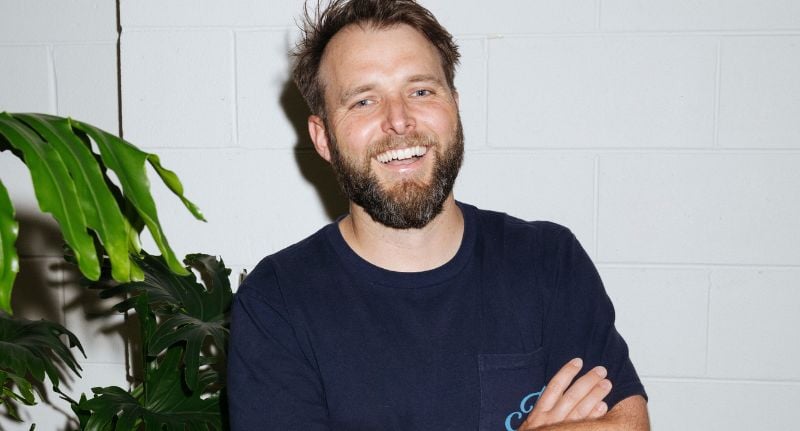
How challengers are outpacing larger establishment brands
For a nation known for its drinking habits the idea of a booze-free beer once seemed unlikely.
But in 2017, challenger brand Sobah proved otherwise, launching as Australia’s first non-alcoholic craft beer company. Just a year later, Carlton & United Breweries (CUB) followed suit, releasing one of the earliest zero-alcohol beers from a major local brewer.
Nearly a decade on, the category has defied expectations (and Australian sensibilities), emerging as one of the fastest-growing beverage markets worldwide.
No one is less surprised by the rise of the little guys than Connor Archbold, CEO of brand tracking platform Tracksuit.
“Any company that launches does well by starting with a niche,” Archbold told Mediaweek.
“Challenger brands help create category growth by launching with a niche in mind and building for that niche. Sometimes they even create categories – non-alcoholic drinks, for example, is a great growth story that was more or less started by challengers before incumbents jumped in.”
Punching above their weight
Bain & Company’s Insurgent Brands 2025 report shows just how significant the shift has become.
It identified 120 insurgent brands in the US last year, together driving 39% of incremental category growth while holding under 2% of market share – up from 17% in 2023.
Archbold said the appeal lies in freshness and focus: “When challenger brands launch, often they’re building for themselves. You see the founder has that insight: ‘I wanted vegan, cruelty-free skincare, so I went and built it.’ That’s how they often start. They’re addressing a new need, or a novel use case, or a demographic that incumbents hadn’t yet spoken to.”
That agility, explained Archbold, allows them to cut through.
“We talk about challenger brands sometimes as the underdog, because incumbents already have share of mind and consistent messaging after years of marketing,” Archbold said.
He continued: Challenger brands have to capture share of mind, often with smaller budgets. But they can be more flexible, take risks, and define themselves creatively. By launching for a niche, they can target the edges of the consumer group with more wild messaging. Look at the canned water company Liquid Death in the States, or sunscreen brand Vacation Inc. – they’re entertaining, and in the attention economy, entertaining brands are the ones people buy.”

Source: Bain & Company
Lessons for incumbents
For established players, the data presents both a warning and an opportunity. Bain highlighted 103 “emerging insurgents” that generated between US$10 million and US$25 million in revenue, with 18 graduating to insurgent status – a reminder that today’s niche player may be tomorrow’s acquisition target.
Archbold sees incumbents as powerful but sometimes cautious.
“I love incumbent brands. As someone who loves marketing effectiveness, those long-standing brands are fascinating. They’ve built huge loyal audiences, but I always encourage them to take more risks while remaining consistent.
“Nike’s ‘Why Do It’ campaign – as opposed to their classic ‘Just Do It’ tagline – was a risk to appeal to new audiences. Jaguar’s rebrand got lots of press and is still being talked about more than a year later,” he said.
But, he added, “When you take risks, you do open yourself up to falling flat with your core base. Sometimes that’s why you see acquisitions instead – rather than departing too far from brand strength.”
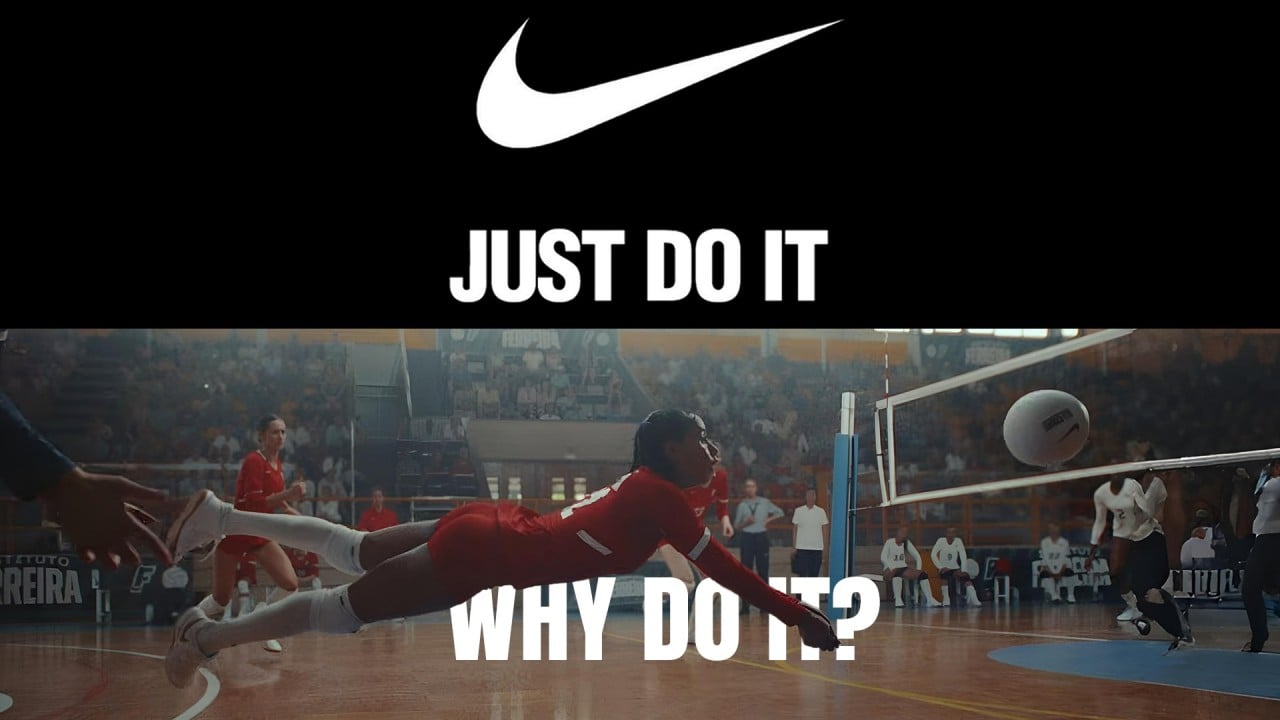
Growth through insights
The latest Bain report highlighted the headwinds facing FMCG – from flat volumes to price sensitivity and growing scrutiny of ultra-processed foods.
But Archbold said insurgent brands have managed to sidestep many of those pressures by staying nimble and sharply focused. For him, the difference lies in how they use data. “As they grow, challenger brands need to build off clever insights,” he explained.
“With Tracksuit, for example, we gather insights on categories, demographics, and who’s underserved. Challenger brands can target those edge cases with less risk than an incumbent. The key is holding on to those new entrants in a category, rather than losing them to incumbents who have lower prices and better distribution,” he said.
That focus often means rethinking assumptions about audiences. “Brands might think they need to target Gen Z, but our data might show Gen X to be the biggest spenders,” Archbold said.
“It’s about really understanding who’s spending in a category, why, and what they care about, then framing your strategy accordingly.”
Behind the scenes, that insight comes from an enormous flow of consumer data.
“We do hundreds of thousands of surveys daily, tracking around 15,000 brands. We ask about purchasing, awareness, consideration, and preferences, and then capture open-text answers about what people think and feel. That helps leaders see category shifts, understand who’s entering or leaving, and identify blank spaces that aren’t being served well,” he added.
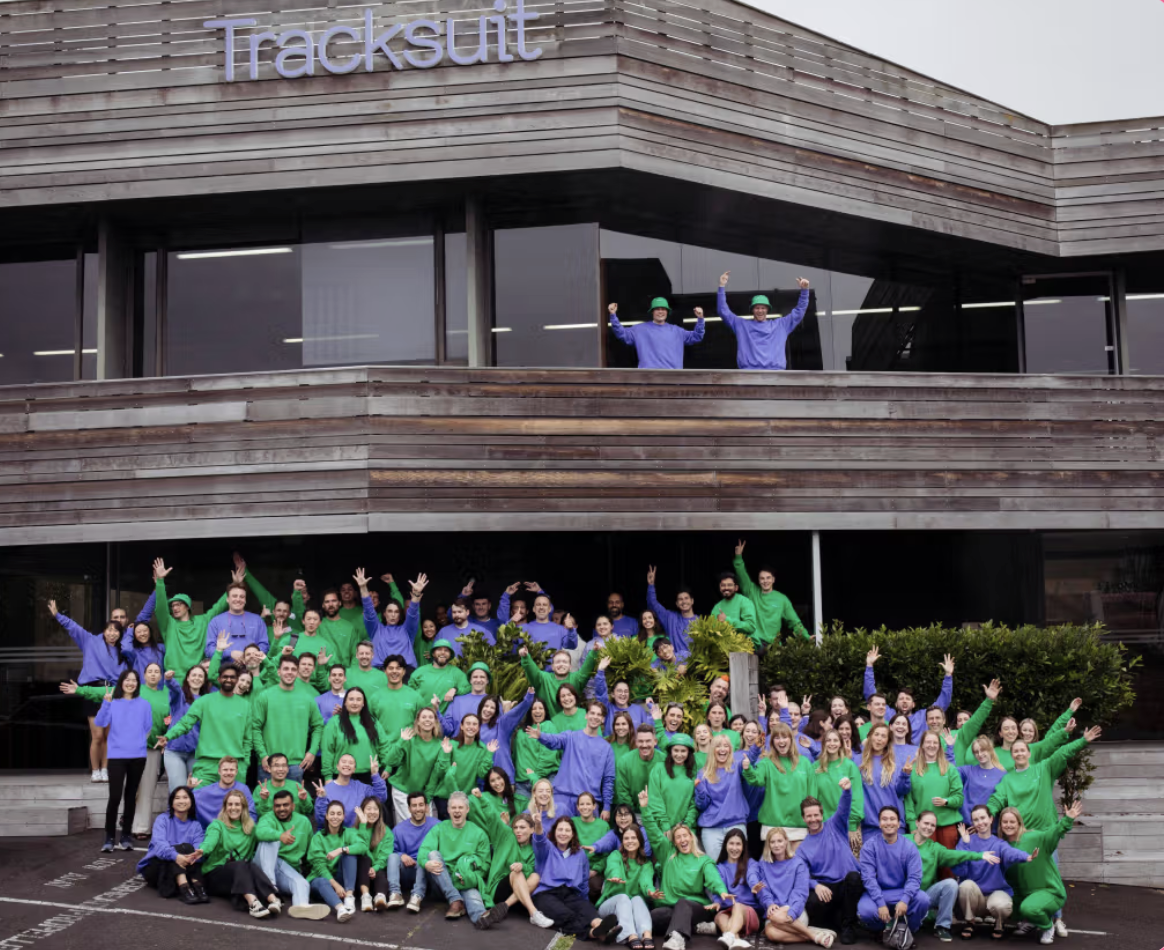
Trust in an AI future
As technology reshapes the landscape, Archbold believes trust will be the factor that separates lasting brands from the rest.
“In this AI future, the barrier to entry for creating brands will drop dramatically,” he explained. “You’ll be able to source products, build, and launch a brand almost instantly. With so many new brands, trust will become even more important.”
For consumers, that might mean reverting to the labels their parents bought or leaning on recommendations from friends. For businesses, the path looks different depending on their position in the market.
“Challenger brands need to win trust in their niche first, then expand,” Archbold said. “Incumbents should lean into the trust and share of voice they already have.”
Main image: Tracksuit CEO Connor Archbold

Balancing AI and media reputation against the concerns of freaked-out workers
A new report from media intelligence platform Medianet has recognised the reputational tightrope companies face when adopting Artificial Intelligence. Traditional media is framing it largely from a position of optimism, while social media sentiment tends to skew negative.
The AI Tightrope: Balancing AI, Reputation and Workforce Impact report analysed more than 50,000 media and social media items from the first half of this year. It found that 71 per cent of print and online coverage emphasised AI’s potential for productivity, innovation, and growth. However, negative themes tied to job cuts and restructures remained significant, particularly when amplified on social platforms, where 64 per cent of posts expressed negative sentiment.
A prominent stat in the report is the finding that union commentary on AI surged 265 per cent between May and June 2025, with unions gaining visibility in professional sectors where they have not traditionally had a strong presence. Or to think about it another way: knowledge workers are starting to freak out a bit.
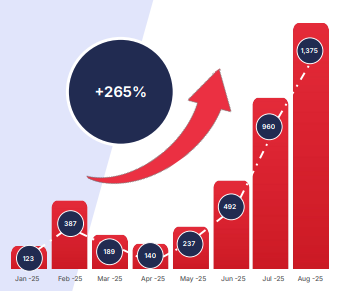
Media mentions highlighting Union commentary around AI between May and June 2025 compared with the four months prior.
There’s a disconnect between white collar workers clearly identifying concerns about their job security, and the reporting in traditional media publications like The Australian and the AFR where stories are focused on AI productivity benefits.
“There is definitely more intentional engagement coming from the unions and that’s going to contribute to more of a voice,” Medianet Head of Insights Jacquie Hanna told Mediaweek.
Hanna believes that the media is generally being even-keeled in its coverage, acknowledging the stresses on workers: “I think potentially the AFR and those kinds of major financial services or industry trade publications, what they’re noticing is that these conversations are no longer just in the shareholders’ offices and no longer just in the boardroom. They’re actually now permeating their employees’ lives and the broader Australian population.
“[In the AFR] There’s just a kind of broader acceptance that AI is going to be inevitable. So instead of talking about will they/won’t they, it’s more talking about which businesses are doing it better,” Hanna said.
Media optimism, public scepticism
For companies going through AI-fuelled structural change, it is important that business leaders maintain a consistent view on how the organisation is working with AI processes and systems, along with what that impact will be on staff.
“AI has become as much a reputation story as a technology story,” said Amrita Sidhu, Managing Director at Medianet. “Our research shows corporate leaders are driving optimism in the headlines, but public cynicism is growing louder online. Navigating this gap is now a frontline issue for communication and corporate affairs professionals.”
Hanna added: “The media loves a bad news story, and when disgruntled employees speak out, a company’s carefully curated messaging can unravel quickly. Emotive language from employees and unions tends to go viral and spill onto social channels.”
Case studies in the report point to the Commonwealth Bank’s transparent communication strategy, which helped neutralise backlash around AI-related job cuts, while inconsistent messaging from Telstra fuelled union criticism and negative headlines.
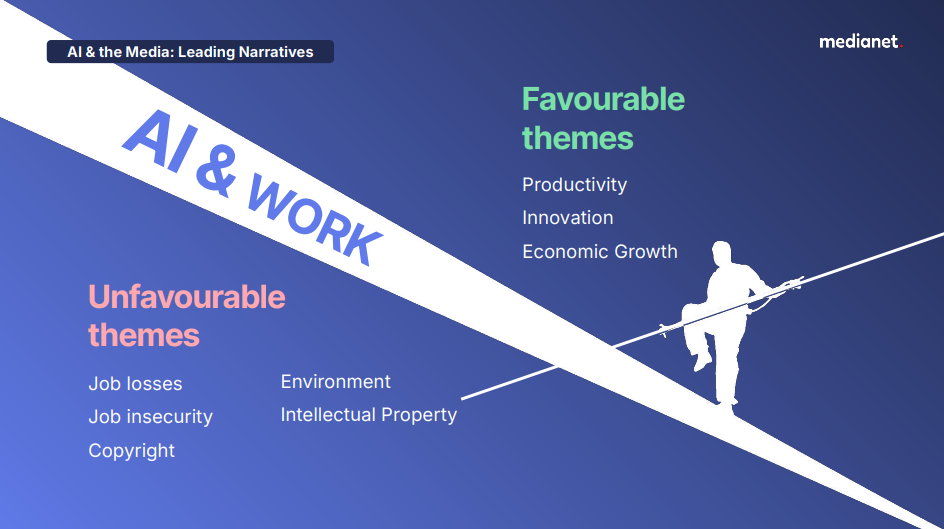
Recommendations for communicators
The report outlines several strategies for companies to manage reputational risks when implementing AI:
• Showcase expertise – thought leadership can help fortify reputation during difficult decisions.
• Maintain consistent messaging – inconsistencies around job cuts are quickly highlighted by unions and amplified in media.
• Be transparent – acknowledge the impact of AI and emphasise workforce reskilling rather than focusing solely on cost savings.
“Companies must anticipate and manage the perspectives of stakeholders, including unions, and articulate a clear ‘why’ behind any workforce changes,” Hanna said. “The focus should be on reskilling and higher-value roles rather than just headcount reduction.”
Hanna comes back to her belief that consistency is key.
“Whatever engagement you have, whether you’re talking to your shareholders, you’re talking to your employees, you’re talking to the media, you have to maintain a consistent line.
“The report unpacked the difference between Telstra and CommBank, where despite the fact that there was a bit of an issue with CommBank and they did have to walk back some of their announcements, they had maintained a very consistent line over the last 12 months, which is: ‘This is coming, this is actually going to be better for our customers’. Also emphasising the positive impacts on customers as well is a really good way of getting strong kind of positive coverage of your AI developments. But he also was really frank about the impact it was going to have on workforces, and he acknowledged this and talked about ways, genuine ways, to reskill and retrain staff so that they could enter into this new world.
“That’s an example of where he has been able to ride some of that negative coverage just a little bit more effectively, because there was very consistent messaging in all channels. So he told his shareholders, this is going to bring benefits, but it’s also going to have impacts. And he told the same message to employees as well.
“In the case of Telstra, there was a little bit of jumping around. And that’s what the media picked up on. Telstra weren’t as upfront about the link between AI and workforce restructure. And that’s made it a little bit more challenging for them to navigate.
“Consistency is key and making sure that you’re emphasising what contingencies are in place to manage those workforce impacts for a very long time… not just a month before you announce the change.”

‘Go big or go home:’ LiSTNR bets big on Bec Judd and Jess Roberts’ ‘Vain-ish”
LiSTNR has confirmed a two-year extension for Vain-ish, the chart-topping beauty and wellness podcast hosted by Bec Judd and Jess Roberts, after the show’s runaway success as a limited series.
The podcast, which hit #1 on Apple’s Top Podcast Charts within 24 hours of its launch, has grown into a multi-platform brand with commercial traction and a devoted audience.
Its raw, candid take on beauty and self-care has tapped into a market hungry for honesty – and advertisers have taken note.
A different kind of beauty podcast
When asked why the show struck a chord so quickly, Roberts told Mediaweek it came down to tone. “We were just being open and honest, and having a bit of a laugh. I think that really drew the listeners in.”
Her co-host agrees. “It was a different tone to what people usually expect in a beauty and wellness podcast,” echoed Judd. “We also launched with a strong publicity push, we went all in with our ‘Simply Irresistible’ video. People typically don’t launch podcasts like that.”
Roberts calls the launch clip “the golden ticket,” while Judd added, “The way we promoted it sparked curiosity – people were super curious to listen, they all jumped on and it was awesome.”

Responding to the audience
Since its debut, Vain-ish has consistently charted – a rarity in the already overcrowded health space – reaching over 72,000 unique listeners on the July Triton Australian Podcast Ranker.
But Judd and Roberts say audience feedback means just as much as the data.
“I think we’re staying pretty true to the original idea,” Judd explains. “It’s always really good when we can see what episodes are rating well. We’re still new but we’re getting a clearer picture of what people want to hear.”
Roberts points to the flood of listener engagement: “I think the response from our audience has been amazing – they’re still tuning in and they’re still engaged. We get hundreds of DMs from listeners with messages of support and thanks for covering certain topics.
“They’re also requesting beauty and wellness treatments that they’d like us to explore, and we’ve been using those messages to measure what topics we know are top of mind for the audience,” she said.
Building a commercial model
With advertisers eager to reach beauty and wellness audiences, Vain-ish has attracted early brand interest, including launch partner Cupra, part of Volkswagen Group.
Judd says the partnership with LiSTNR has allowed them to focus on content while a national sales team handles integration.
“We’ve got a great team at SCA LiSTNR. There’s a national sales team behind us that handles all of that for us, which is one of the best parts of being part of the LiSTNR podcast family.
“We get access to one of the best sales teams in the country, so Jess and I can just really focus on creating the best podcast we can,” she said.
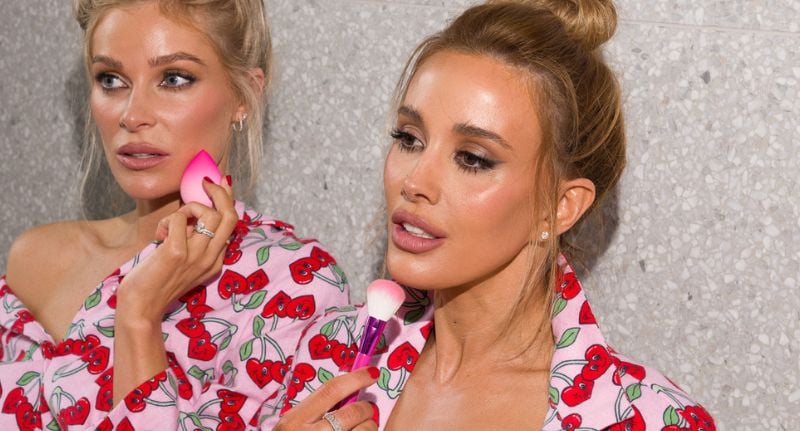
Beyond the podcast
Both hosts see Vain-ish as just the beginning. “I see it bigger – way bigger,” Roberts said. “I don’t think it’s just going to stay in the studio. I’m thinking – take this on the road, baby!”
Judd added: “We’re building and establishing our audience and we’d love to take it further – live events, TV, product – all of it. It’s pie in the sky at the moment and it takes a hell of a lot of work, but we dream big.”
Roberts doesn’t miss a beat: “Yeah, we don’t dream small. Go big or go home.”
Honesty as a selling point
At the core of Vain-ish is an unapologetic commitment to authenticity, even with advertisers circling.
“We just do us,” Judd said. “If you are not authentic or genuine, whether it’s podcasts or radio, listeners tune out. So we show up as the best versions of ourselves. We’ve found if we put a good product out there, then advertisers follow.”
Roberts added: “And we’re living in that no Fs era.”
That approach extends to the way the show tackles beauty culture. “I think we reached a point on Instagram and on social media where there was just so much negativity and hatred, people saying ‘you’re not real’ or ‘you’re fake’,” Roberts said.
“And honestly yeah half it is fake but that’s exactly the point. We’ve both got children, jobs, commitments and busy lives – and we just want to lift the veil, what you see online is not always real.”
Judd puts it more bluntly: “We didn’t wake up like this.”

She continues: “We’re in the age of transparency, the old, ‘I just woke up like this’ or ‘I’m this age and I don’t have a wrinkle because I drink a lot of water and wear sunscreen’, are unacceptable. I believe that being truthful and honest about what goes into looking like this, people have been so appreciative. We expected we’d get a little bit more blowback than we have, but instead the response has been, ‘Well that’s your truth, so that’s how it is and thank you for sharing.’”
For LiSTNR, the podcast’s performance, commercial interest, and multi-platform potential made locking in a long-term deal a straightforward decision.
With Judd and Roberts pushing for more ways to grow Vain-ish, from live events to product collaborations, the next two years are about expanding its influence beyond the studio.
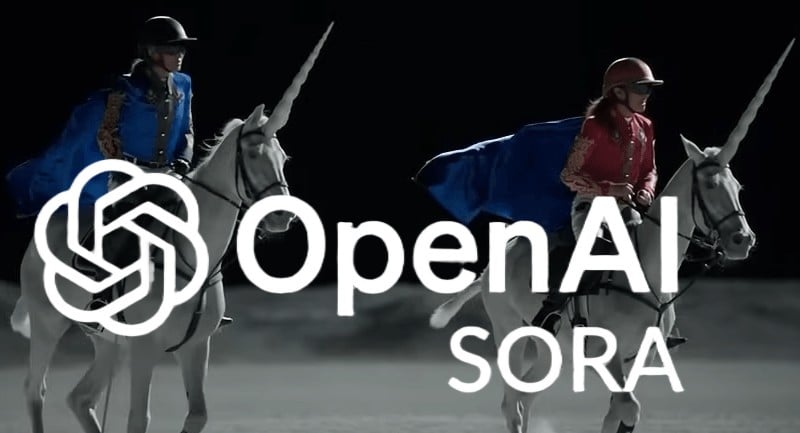
OpenAI launches Sora2 with an app promising to be the TikTok of AI video
OpenAI has soft-launched an upgraded version of its video generation model Sora. The imaginatively-branded Sora 2 promises AI-generated video that is “more physically accurate, realistic, and more controllable.” The game-changer in Sora 2 is that it offers synchronised dialogue and sound effects.
The first iteration of Sora was released back in February 2024 and shocked people with what was possible. It was impressive, but very quickly the flaws in the video were evident. Writing for Wired, journalist Steven Levy commented on a demo video featuring two people walking along a path in Japan. “It’s not perfect. Only when you watch the clip a few times do you realize that the main characters—a couple strolling down the snow-covered sidewalk—would have faced a dilemma had the virtual camera kept running. The sidewalk they occupy seems to dead-end; they would have had to step over a small guardrail to a weird parallel walkway on their right. Despite this mild glitch, the Tokyo example is a mind-blowing exercise in world-building.”
That was the prevailing sentiment: It wasn’t perfect, but represented both a huge step forward and showcased the promise of what is possible.
Sora 2 is a massive jump forward and the introduction of synchronised sound is impressive. In the announcement about Sora 2, OpenAI was realistic about the journey ahead, recognising that its work in video is still in its early days. In a statement on its promotional Sora 2 page, OpenAI stated: “The Sora team has been focused on training models with more advanced world simulation capabilities. We believe such systems will be critical for training AI models that deeply understand the physical world. A major milestone for this is mastering pre-training and post-training on large-scale video data, which are in their infancy compared to language.”
Last week, OpenAI briefed talent agencies and Hollywood studios to about the launch of Sora 2. The Wall Street Journal reported yesterday that copyright owners would be forced to explicitly ask OpenAI not to include their owned-material if they want to opt-out. The approach is not dissimilar to the approach YouTube took when building its library.
The Sora video tool will not generate images of public figures without their permission.
This is the promotional video released by OpenAI to showcase what is now possible with Sora 2. The duck race in the video is particularly impressive.
There is also this shorter clip reel that is interesting. Presumably no animals were injured during the creation of this AI video…
OpenAI’s TikTok-style app
In addition to access via the web, OpenAI is launching Sora 2 through a social iOS app that will just be branded as Sora.
At launch it is only available in the US and Canada.
Users will be able to create videos based on text prompts, remix other users generations, and discover new videos in a ‘For You’ style feed. In an interesting feature, users can add themselves and friends into any Sora scene following a short, one-time video and audio recording to verify identity and likeness. While OpenAI have said that it will place stricter controls for teen users and will let users revoke access to their likeness, it might still be worth having a chat to younger people about who they allow to use their likeness for videos like this.

The iOS Sora app as seen on the app store
The app is invite-only at first. In the coming weeks, the app will be available to ChatGPT users.
OpenAI will prioritise Sora 1 power users and ChatGPT Pro subscribers. They will be followed then by those on Plus and Team plans. Eligible users will get a push notification in the ChatGPT app.
Developers have been advised that API access and Sora 2 Pro are coming soon.
Financials
Sora 2 development hasn’t been cheap.
In a report published in The Information this week, OpenAI was said to have generated $4.3 billion in revenue in the first half of this year. OpenAI projects full-year revenue of $13 billion. The Information reported that OpenAI “spent $2.5 billion over the same time period, in large part due to its high research and development costs for developing its AI models.”
Other expenses this year included $2 billion on sales and marketing. It contributed to OpenAI posting an operating loss of $7.8 billion in the first half of the year.
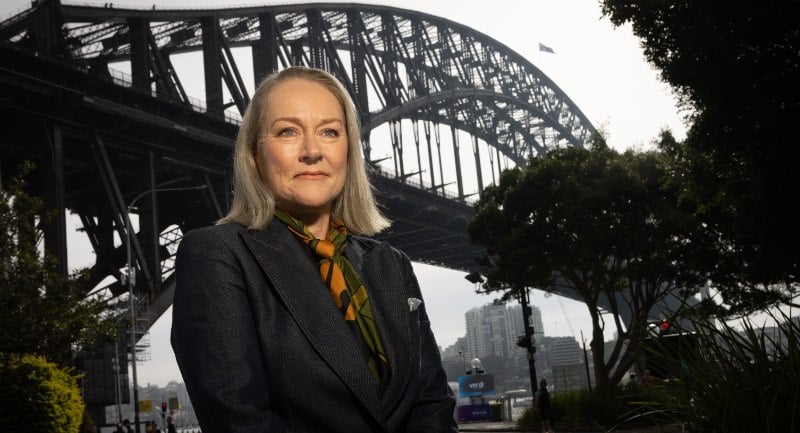
Moira Hogan exits Britbox Australia amid BBC streaming structural reorganisation
Moira Hogan will step down as EVP, BritBox International and General Manager, Australia, after five years with the BBC Studios-owned streaming service.
No successor has been named at this stage.
The news of Hogan’s departure follows news out of the UK overnight that CEO of BBC Global Media & Streaming Rebecca Glashow is set to depart the business, prompting a structural reorganisation.
Hogan spearheaded the launch of BritBox in Australia and played a central role in transforming the market into one of the platform’s strongest performers. Under her leadership, the business secured key distribution deals with Amazon, Apple and Foxtel, and delivered consistent subscriber and revenue growth.
BritBox, available in the US, Canada, Australia, and the Nordics, is a joint venture wholly owned by BBC Studios and offers a curated selection of British dramas, comedies, and documentaries.
Earlier this year, Hogan oversaw a major relaunch of the service in Australia. Her remit later expanded to include oversight of the Nordics and South Africa, as part of the BritBox International senior leadership team.
“I’m immensely proud of everything we’ve built together,” said Hogan. “With the recent shift within Studios to a more domestic focus, I’ve decided this is the right time to seek a new challenge that aligns with my experience in international business leadership.”
“We’ve grown the team, built meaningful partnerships, and achieved a huge lift in revenue. I’m leaving behind a strong, resilient team that will continue to thrive and grow.”
Robert Schildhouse, President BritBox North America and GM BritBox International, said: “Moira has delivered exceptional results both locally and internationally, operating with autonomy while building strong, collaborative relationships across our global organisation. Moira has taken bold risks that drove revenue growth and shown commitment to building a culture where everyone can do their best work and share in success. It’s been a pleasure working with Moira on the SLT and I wish her every success.”
Robi Stanton, EVP & General Manager, Global Media & Streaming, ANZ at BBC Studios, added: “Moira’s leadership has been central to the success of BritBox in Australia. Her strategic vision and deep understanding of the market were instrumental in building a thriving business. We thank her for her significant contributions and wish her the very best in her next endeavour.”

LinkedIn’s first AI agent launches in Australia
LinkedIn has launched its AI-powered Hiring Assistant in Australia, marking the first rollout of the tool designed to streamline the recruitment process and improve candidate quality.
Available from today, the Hiring Assistant automates repetitive tasks such as sourcing, screening and outreach. Early trials have shown it saves more than four hours per role, reduces profile reviews by 62 per cent, and lifts candidate engagement with a 69 per cent higher InMail acceptance rate.
Recruiters are facing growing pressure as job applications rise and AI-written CVs become more common. LinkedIn research found 17 per cent of HR professionals spend three to five hours a day reviewing applications, while 94 per cent say the majority of applications do not meet listed criteria.
Recruiter adoption in Australia
Engineering and infrastructure consultancy Aurecon has fully integrated Hiring Assistant into its recruitment process, cutting candidate sourcing time by around 30 per cent.
Shaun Du Preez, Aurecon Talent Acquisition Lead NSW & ACT, said: “Hiring Assistant is timesaving and I’ve seen about a 30 per cent reduction in time spent on sourcing. It’s allowed me to drive more strategic conversations with hiring managers rather than repetitive search tasks. The quality of candidates Hiring Assistant is surfacing is a game-changer.”
Lucy McGhee, Aurecon Talent Acquisition Lead Victoria and South Australia, added: “LinkedIn’s Hiring Assistant isn’t just an AI tool – it’s a strategic partner and companion in our hiring process. It shows how AI can empower recruiters to do what they do best – connect the right people to the right opportunities.”
AI and the skills shift
According to LinkedIn data, the skills needed for jobs in Australia are projected to change by 66 per cent by 2030 compared to 2016. Hiring Assistant is designed to support skills-based hiring by matching candidates on skills rather than proxies such as education or past employers.
Adam Gregory, Senior Director, ANZ, LinkedIn Talent and Learning Solutions, said: “Recruiters are under growing pressure as more people apply for roles that don’t match their skills. Our new AI agent is designed to take on a recruiter’s most repetitive tasks, so they can spend more time on their most impactful work.”
LinkedIn reports that a skills-based approach can expand candidate pools by 7.7 times in Australia. Its research shows 68 per cent of Australian HR professionals believe AI will expand career opportunities for people from diverse backgrounds, while 56 per cent say AI will push employers to focus more on skills than degrees.
Top image: Adam Gregory

Seven West Media and SCA say ‘I do’… but will Nine crash the wedding?
Industry sources have told Mediaweek the proposed merger between Seven West Media (SWM) and Southern Cross Austereo (SCA) is far from a closed deal, with speculation Nine Entertainment Co. (NEC) could still step in.
“This deal doesn’t stop Nine from making a play at all,” an insider told Mediaweek. “But they need come in with a cash bid before the transaction is complete.”
SWM and SCA today confirmed they have signed a Scheme Implementation Deed (SID), which sets out the framework for a potential merger.
If completed, the deal would create one of Australia’s largest integrated media companies, spanning free-to-air television, audio, streaming, digital, and publishing.
What the deal involves
Under the proposed scheme of arrangement, SWM and SCA would consolidate their assets, combining metro and regional TV, audio networks, and digital platforms under a single umbrella.
At this stage, the SID does not finalise the merger – it only sets out conditions that must be met before completion. These include:
• Regulatory approvals from the ACCC, ACMA and ASX.
• Shareholder approval, with at least 75% of votes cast and a majority in favour.
• Independent expert sign-off confirming the deal is in shareholders’ best interests.
• Court approval.
• Consent from lenders and ASX approval for the new SCA shares.
Other safeguards, such as no material adverse changes to either business. Until these hurdles are cleared, the merger remains a proposal.
Could Nine trigger a bidding war?
Talk of Nine’s potential interest in SCA has been circulating for months. In August, SCA CEO John Kelly told Mediaweek the company would consider offers “if it was of the right offer for our shareholders and it made sense.”
Nine recently unlocked $3 billion from the sale of its stake in realty site Domain, prompting considerable speculation on where Nine will invest that cash.
If Nine were to make a move on SCA while the merger process with SWM is underway, it could set off a competitive bidding scenario.
Strategic alignment challenges
On paper, SCA’s focus on the 25–54 demographic could complement Nine’s TV and publishing assets. However, there is a sticking point: radio.
Nine’s talk stations, including 2GB and 3AW, skew toward older audiences (55–64s), while SCA’s Hit and Triple M networks, alongside its digital platform LiSTNR, lean into younger cohorts. Any consolidation would require careful consideration of how the combined audio offering fits strategically.
But even before audience strategy is addressed, Nine would face regulatory barriers.
Under the Broadcasting Services Act, no company can hold more than two commercial radio licences in a single market. NEC already controls five talk stations nationally – 2GB (Sydney), 3AW (Melbourne), 4BC (Brisbane) and 6PR (Perth).
SCA, meanwhile, operates 99 stations across metro and regional markets. Folding these into Nine’s portfolio would breach ownership caps in key cities. To comply, Nine would need to divest its talkback assets before any acquisition could be finalised.
What’s next
SWM and SCA shareholders are expected to receive detailed scheme booklets, including independent expert reports, in the coming months. A shareholder vote is likely by Q1 2026, once regulatory approvals are in hand.
Until then, industry eyes remain fixed on whether Nine will enter the contest.
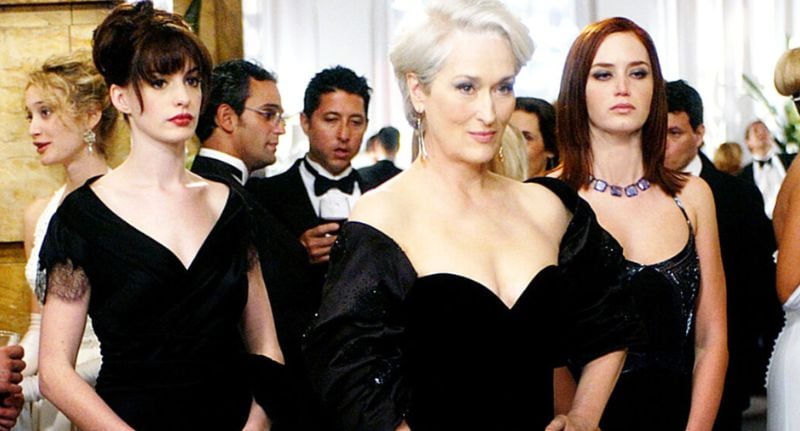
Wade Kingsley: “The Devil wears SWM? SCA shareholders weigh the new outfit”
By Wade Kingsley, co-host of the Gamechangers Radio podcast
I’m glad people working in the media don’t have to wear uniforms.
Imagine going in for a fitting, then parading around in your corporately branded apparel, only to have it confined to the local op shop without much wear.
As far as the team at Southern Cross Austereo (ASX: SXL) is concerned, it might be a case of having a tailor on standby.
The proposed merger of SCA and Seven West Media (ASX: SWM) that will surely kickstart another season of consolidation, both make sense and are curious at the same time.
It makes sense with cost synergies and revenue opportunities, as mergers always do on the surface. Measure twice, cut once.
Curious because, at least from the SCA side, they are embracing the wardrobe of a business whose fabric is (still) largely dependent on free-to-air television. So while SCA shareholders are getting around in the latest street wear, they are now being asked to don a valour tracksuit to eat their roast chicken, watching the 6pm news.
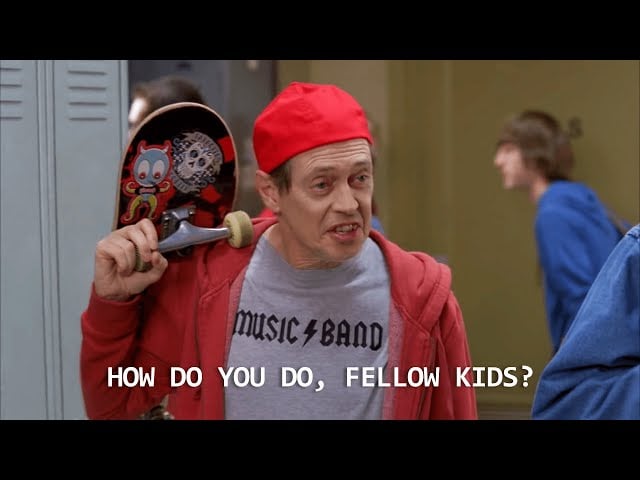
‘All about audio’
Just 13 weeks ago, SCA divested their long-held regional television asset, declaring they were ‘all about audio’. I know media years are akin to dog years, but this is a lightning-fast turnaround in what is/was its ambition.
SCA CEO John Kelly had sprouted the strategy in a round of media interviews when the deal was announced, and the market responded enthusiastically. The share price is up around 30% from June 2025.
Audio is ‘on trend’ and has a great growth story when digital and addressable audio (read: podcasts) are included. Not so great when it’s focused on legacy broadcast radio alone.
SCA had already stared down its major competitor ARN (ASX: A1N) and fended off a proposed takeover 12 months ago. Since then, SCA have strutted the catwalk sharing improved ratings and revenue performance while ARN have been left wearing dark sunglasses watching from the front row.
The green Listnr uniform fits like a glove, but someone has dropped in a red FTA TV uniform to try on. So why the change?
SCA might say that the TV assets they held were exclusively regionally based, and SCA felt that they were better operated by an existing metro TV broadcaster. Sure. But with SWM they are about to get back into bed with local TV in Seven’s regional markets, and the first casualties will almost certainly be dual sales teams. Sadly, more people will be out of work in what has been a tough year/decade for media sales.
No doubt this move helps SCA defend its turf (for now) and grow its audience. The cross-platform promotional opportunities for their on-air talent and stations will improve reach. It could easily out-spend any competitor on FTA and SWM’s digital assets on contra airtime alone.
But can they make this new wardrobe fit – culturally, strategically? These are all questions that SCA shareholders have to weigh up before the AGM in November.
The quote doing the rounds when regional operator Southern Cross ‘merged’ with the then mighty Austereo in 2011 was that it was like St. Vincent de Paul buying Louis Vuitton.
Time will tell if the SCA shareholders see this as something akin to a Paris fashion show or if it feels more like ‘The Devil wears Prada’.
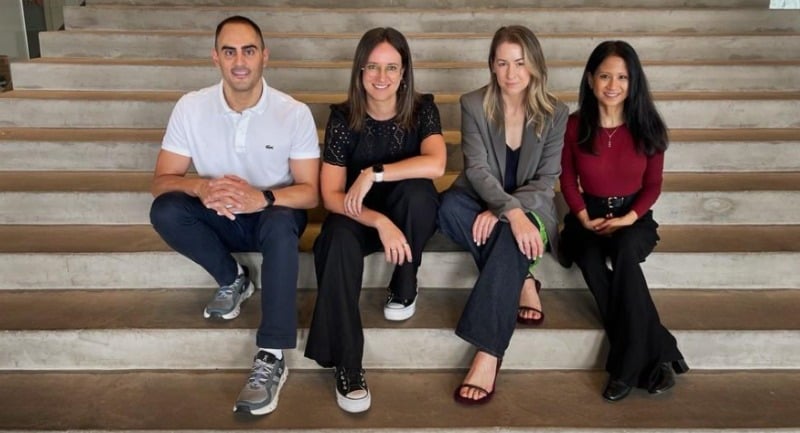
Droga5 appoints global operations, account and production leads
Droga5, part of Accenture Song, has named three new global leaders as it strengthens its international network. Julia Albu, Lauren Tomlinson and Ruben Mercadal have been appointed to newly created positions spanning operations, account leadership and production.
Effective immediately, Albu becomes global chief transformation and operations officer, Tomlinson takes on executive director of global accounts, and Mercadal moves into the role of global head of production. All three will be based at Droga5’s New York headquarters and report to global CEO Mark Green. The agency operates across eight markets including New York, Sydney, Melbourne, Auckland, Dublin, London, São Paulo and Tokyo.
Career backgrounds
Albu steps up from her most recent role as chief of staff to Droga5 founder and Accenture Song CEO David Droga. She first joined the agency in 2006 as an account director before holding senior positions at BBH and Anomaly. Returning to Droga5 in 2015, she has since led accounts such as Harley-Davidson, Mailchimp and Johnsonville, before overseeing creative operations from 2019.
Tomlinson was previously head of new business at Droga5 New York, where she secured wins for Bosch, HBO Max, Xbox, Dove and Tourism Australia. She joined the agency in 2016 and has led campaigns for IHOP, Christie’s and Prudential. Earlier in her career, she held account roles at Adam&Eve DDB and other agencies.
Mercadal expands his remit after serving as New York co-head of production since 2022. Since joining in 2016, he has overseen work including The New York Times’ Cannes Lions Grand Prix-winning “The Truth Is Worth It” campaign, as well as recent projects for Coors, Xbox, Hennessy and Accenture.
Building a global leadership team
The appointments follow a series of senior hires as Droga5 establishes its global leadership structure. Recent additions include global head of reputation and creative excellence Ann-Christine Diaz, worldwide CCO Pelle Sjoenell, global chief strategy officer Emma Montgomery, and Green himself, who was previously CEO of The Monkeys and Accenture Song Australia and New Zealand.
Green said the expanded leadership team was designed to connect Droga5’s offices worldwide with the creative and technology resources of Accenture Song. “At Droga5, creativity has always been our superpower, and with Accenture Song, we have technology and data on our side to propel our ideas further,” he said.
“Julia is a true go-getter, and her unique insight into both the worlds of Droga5 and Accenture Song will be key. Lauren has a track record of building longstanding and fruitful client partnerships. And Ruben brings unmatched creative passion and prowess for solving the trickiest of production problems. We now have a full bench of leaders who have the vision, expertise and drive to take Droga5 into its next chapter.”
Top image: Ruben Mercadal, Julia Albu, Lauren Tomlinson and Ann-Christine Diaz

In the AI Era, Privacy-First Innovation Is Not a Constraint, it’s a Competitive Advantage
It has now been more than six years since Australia’s long-anticipated Privacy Act overhaul began, and the conversation remains as charged and consequential as ever. In August, the Productivity Commission released the interim report of its enquiry into Harnessing Data and Digital Technology, which proposed a “dual-track” compliance model, suggesting that businesses should be able to choose between a prescriptive, control-based approach and an outcomes-based model grounded in the “best interests” of the consumer.
While this may seem like a welcome reprieve for businesses concerned about regulatory burden, it risks reigniting a tired and ultimately unproductive debate: that privacy and innovation are somehow at odds.
We’ve heard this before, from those arguing that stronger privacy laws could stifle progress in Australia. But framing privacy as an obstacle misunderstands both the direction of global technology and the expectations of modern consumers.
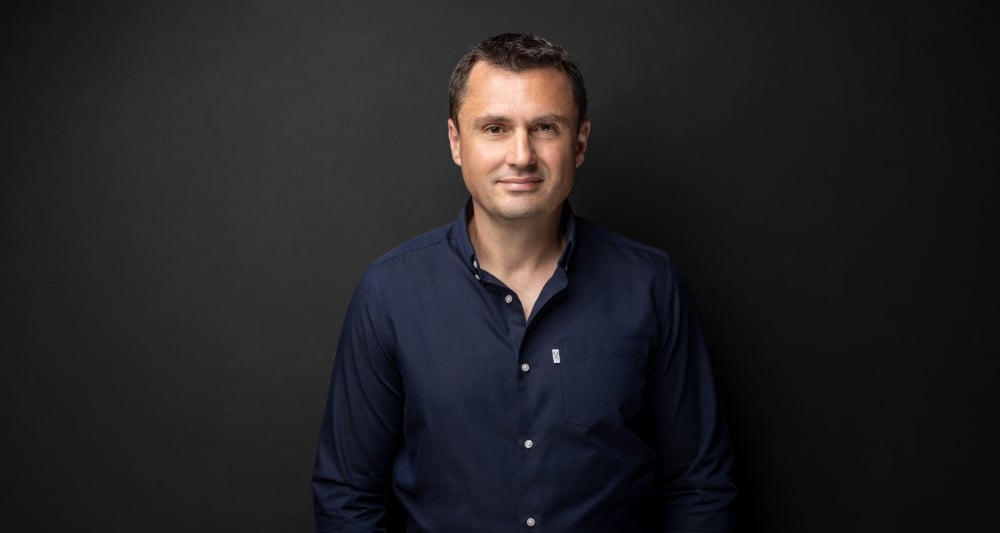
Richard Knott, SVP APAC InfoSum
Innovation is essential to Australia’s digital and economic future. But so is trust. In a world shaped by data collaboration, automation, and increasingly intelligent technologies, public confidence is no longer a “nice to have”. It is the foundation upon which long-term innovation must be built.
The lesson of the last decade
Over the last decade, digital advertising has delivered incredible innovation, but at a cost. Much of this progress was built on opaque, sprawling data ecosystems where personal information was traded, shared, and repurposed with little regard for the individual behind the data.
The dominant model rewarded data centralisation and mass collection over minimisation and consent. Third-party cookies enabled cross-site surveillance. Data brokers profiled consumers without their knowledge or consent. Tech platforms created closed-loop ecosystems that monetised attention while shielding how data was being used.
What got lost in that rush was the consumer.
This era gave rise to intrusive targeting, poor data hygiene, and widespread privacy erosion. The resulting backlash from regulators and the public, has been clear and consistent. GDPR, CCPA, and Australia’s ongoing Privacy Act reform are all direct responses. So too is the growing rejection of third-party identifiers by browsers and platforms alike.
The key takeaway from this is that consumers aren’t just data points, they’re people who expect fairness, transparency, and respect. Innovation that disregards those expectations is neither sustainable nor competitive.
Australia now faces a unique opportunity. The convergence of Privacy Act reform and the rise of AI presents an opportunity not just to correct past mistakes, but to build something better.
We’ve already seen how privacy pressures can fuel progress. The third-party cookie may not be quite dead yet, but years of expecting its demise have driven a wave of innovation, experimentation, and new thinking that has made the system better.
Privacy by design
If new technologies and approaches bake in privacy by default principles in their foundation, privacy and innovation go hand in hand. In digital advertising, we’re increasingly seeing this on a daily basis. Forward-thinking approaches, such as decentralised data collaboration, federated learning, and privacy-enhancing technologies, allow brands to generate insights without ever centralising or sharing raw data.
Federated learning enables analysis across distributed datasets without requiring them to be moved. Privacy-enhancing technologies such as differential privacy, secure multi-party computation, and encryption keep personal information protected throughout the process. These tools empower brands to deliver relevant, data-driven experiences while maintaining full control and consumer trust.
This is fuelling a broader rethink of how data is valued, no longer as a commodity to be owned, but as a strategic asset to be connected, safeguarded, and activated responsibly.
The coming months will unveil the conclusion of privacy reform, but whatever comes down the pipes, my take is that for an industry still reckoning with the consequences of opaque data practices, this is the moment to reset.
It’s very possible to create a future where the brands and partners that thrive won’t be those that collect the most data, they’ll be those that use it most responsibly. Those who design for privacy understand that innovation and accountability must go hand in hand.
The next era of digital advertising will be shaped not by how much we know about people, but by how well we respect them.
As Australia’s Privacy Commissioner Carly Kind recently noted, “A more productive economy is contingent upon Australian consumers confidently participating in the digital economy and businesses retaining the trust of their customers in deploying new innovations. Privacy is an important foundation to enable that to happen.”
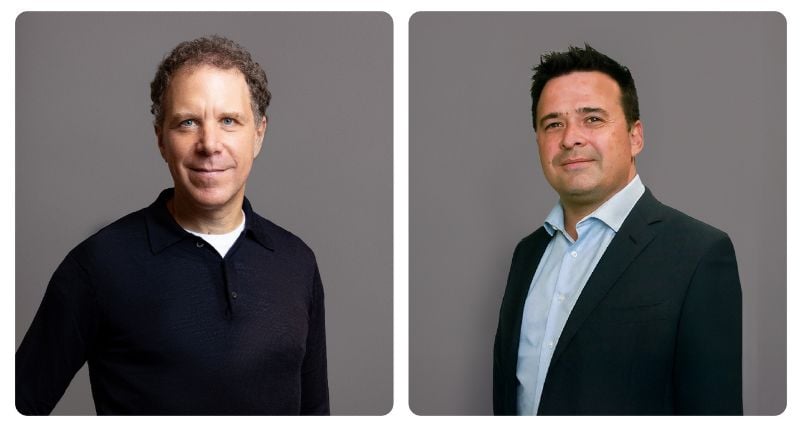
Labelium Group rebrands as Cosmo5
Labelium Group has officially rebranded as Cosmo5, rolling out a new name and positioning designed to simplify its global presence and better reflect its evolution as a marketing services group.
Founded in Paris in 2001, the business has expanded into 18 countries and now manages nearly A$3.28 billion in annual media budgets.
With the rebrand, the group is anchoring itself around five connected pillars: Media, Commerce, Creative, Data, and Technology. They will be able to operate independently or in tandem, depending on client needs.
Simplifying a complex brand
President and CEO Stéphane Levy said the change was driven by the need to make the group easier for clients to navigate.
“The Labelium Group was often seen as complex, partly because the name referred both to the original agency and the entire group,” he explained.
“With Cosmo5, we aim to bring greater clarity and make our offering easier to understand: clients can now collaborate either directly with our specialist brands or via the integrated solutions of the group brand.”
The rebrand is accompanied by a new positioning: “Future-first marketing for the new era of intelligence.” The philosophy, according to the group, is about anticipating and shaping change rather than simply reacting to it, blending AI with what it calls operational, emotional, ethical and strategic intelligence.
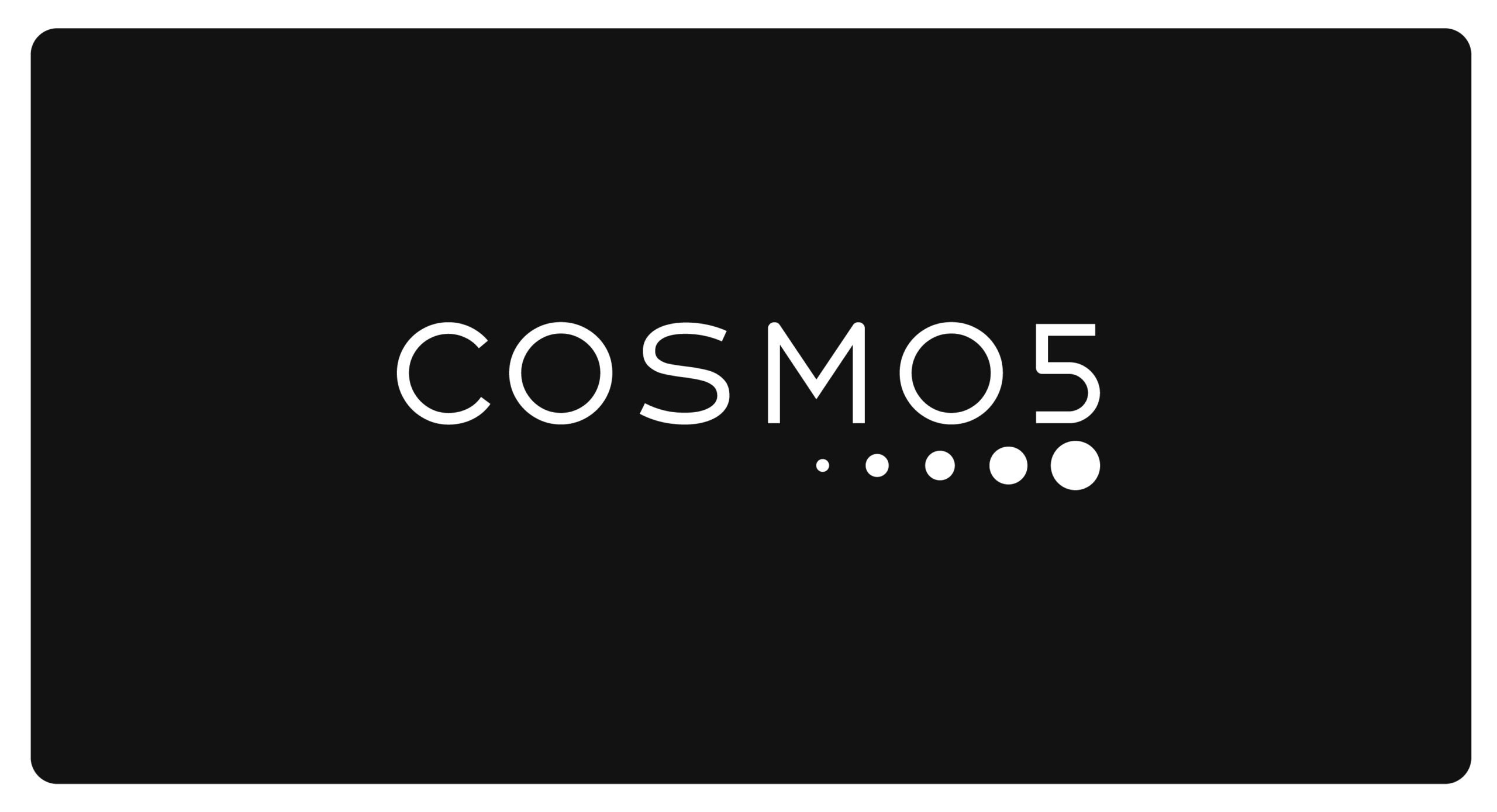
Australian leadership and specialist brands
In Australia, Cosmo5’s business is led by Jean Kerboul, CEO APAC. Its local network includes Ryvalmedia, Foxcatcher, 1000heads and Tightrope. Kerboul said the rebrand brings both clarity and momentum.
“The evolution of Cosmo5 marks an exciting new chapter for the Group, one that unites our shared identity, amplifies the strength of our Australian business and brands, and most importantly, empowers our clients to stay ahead of their competitors and achieve future success.”
Globally, Cosmo5 will continue to pursue growth through a mix of acquisitions and internal development, targeting 10–15% annual expansion.
The group says it remains focused on strengthening hubs in North America, Europe and APAC while building out capabilities for emerging client needs.
Cosmo5 is now live worldwide, with the new name and identity rolling out across all offices, digital platforms and client communications.
Main image: Stephane Levy and Jean Kerboul
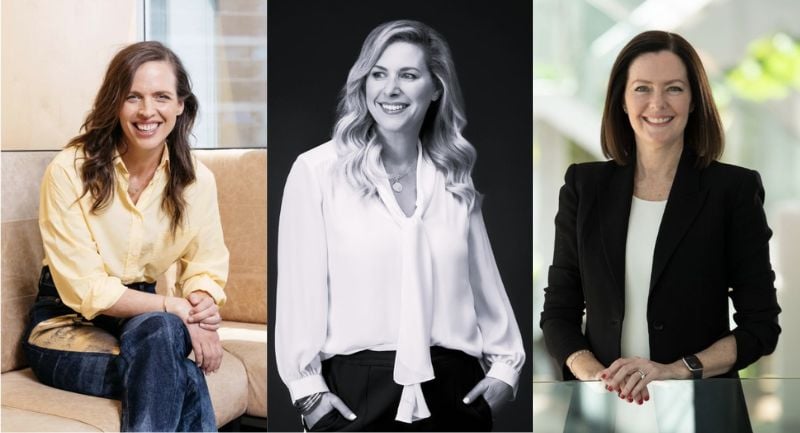
ADMA adds Uber, Westpac and Blackmores leaders to Advisory Committee
The Association for Data-Driven Marketing and Advertising (ADMA) has expanded its Advisory Committee with the appointment of three senior marketing leaders: Lucinda Barlow from Uber, Michelle Klein from Westpac and Joanne Smith from Blackmores Group.
Barlow is Senior Director and Head of International Marketing (APAC, EMEA, Latin America) at Uber, Klein is Chief Growth and Marketing Officer at Westpac, and Smith is Chief Brand, Innovation and Communications Officer at Blackmores Group. Each brings global experience across brand leadership, digital transformation, AI, and building high-performing teams.
The appointments follow the earlier confirmation of David Morgan as Chair, Steve Brennen as Deputy Chair and futurist Tom Goodwin as ADMA’s first internationally based Advisory Committee member. Other members include senior leaders from MECCA, Woolworths Group, Optus, NAB and Deloitte.
Morgan said the new members’ experience would be “invaluable” as the body sharpens its agenda. “Lucinda, Michelle and Joanne bring deep experience from the highest levels of global and well-respected organisations, where they have shaped brands, driven transformation and built capabilities that set benchmarks for the industry.”
ADMA CEO Andrea Martens said the calibre of appointments reflected the association’s growing role. “Lucinda, Michelle and Joanne have led at some of the world’s most dynamic organisations and their voices will be critical as we prepare marketers for the complexity and opportunities of an AI-driven, customer-first world.”
The three new members join for an initial three-year term. They complete a 15-person committee including leaders from Deloitte Digital, Optus, MECCA, Woolworths Group, NAB, Meta, and In Marketing We Trust. The group advises ADMA on industry capability, responsible marketing standards and the impact of new technologies.
Top image: Lucinda Barlow, Michelle Klein, Joanne Smith
Media
Hot takes roll in after SWM and SCA’s merger
The pair write that after decades of wielding power across politics and business, Stokes’ influence has been fading, as the local the broadcasting landscape now becomes heavily reshaped by global tech giants.
Still at The Australian, and James Madden landed a chat with Seven West Media (SWM) CEO Jeff Howard post-announcement.
According to Howard, the deal is about being able to “compete against the global platforms that are trying to take our lunch every day.”
Timeline leading up to the SWN/SCA deal
With all that said and done, there is still the possibility Nine Entertainment Co. (NEC) could crash the wedding.
Industry sources have told Mediaweek the proposed merger “doesn’t stop NEC from making a play at all. But they need come in with a cash bid before the transaction is complete.”
Burke hits back at Trump’s Hollywood tariff threat
As Bianca Farmakis writes in The Australian Burke said the government was monitoring the fallout but would “stand up unequivocally” for local producers.
Companies
Daniel Ek to step down as Spotify CEO
The BBC’s Natalie Sherman writes that Ek will remain executive chairman, focusing on strategy and major decisions while others run the day-to-day.
James Mangold joins Paramount in overall deal
Deadline’s Mike Fleming Jr and Anthony D’Alessandro write that Mangold’s first project is High Side with Timothée Chalamet, won by Paramount in a hotly contested bidding war.
Brands
Pop Mart bets on Labubu for long-term play
Reuters Casey Hall and Sophie Yu report that Pop Mart is taking a page from Disney, aiming to turn its monster mascot Labubu into a lasting global franchise.
Executive director Si De said the company will focus on expanding Labubu through content, collaborations, parks and merchandising rather than chasing the next hit.
Online
Radio
Radio Skid Row staff quit after ACMA ruling
Now Sky News Australia’s Caroline Marcus has revealed more about the incident, writing that the station dismissed its Jewish host, Nicole, for refusing to support Hamas.
Manager Manu Monteiro and sponsorship co-ordinator Ilhan Abdi have since stepped down.
AI
SAG-AFTRA pushes back on AI ‘actress’
Variety’s Zack Sharf writes that the guild stressed that Tilly is “not an actor” but a computer program built on the unlicensed work of real performers.
